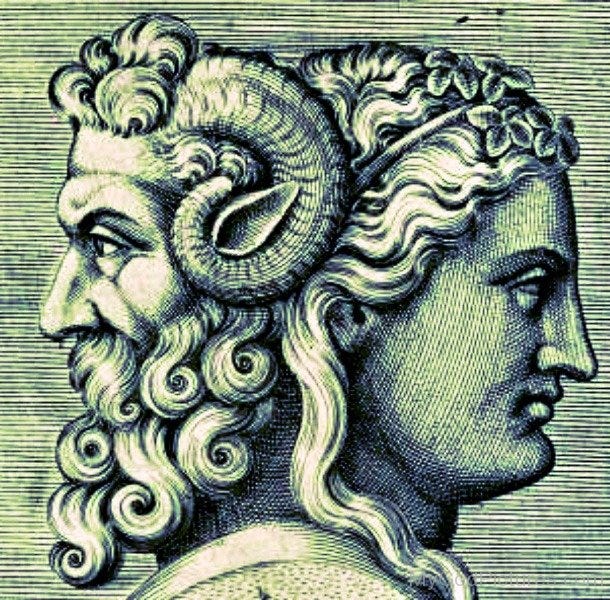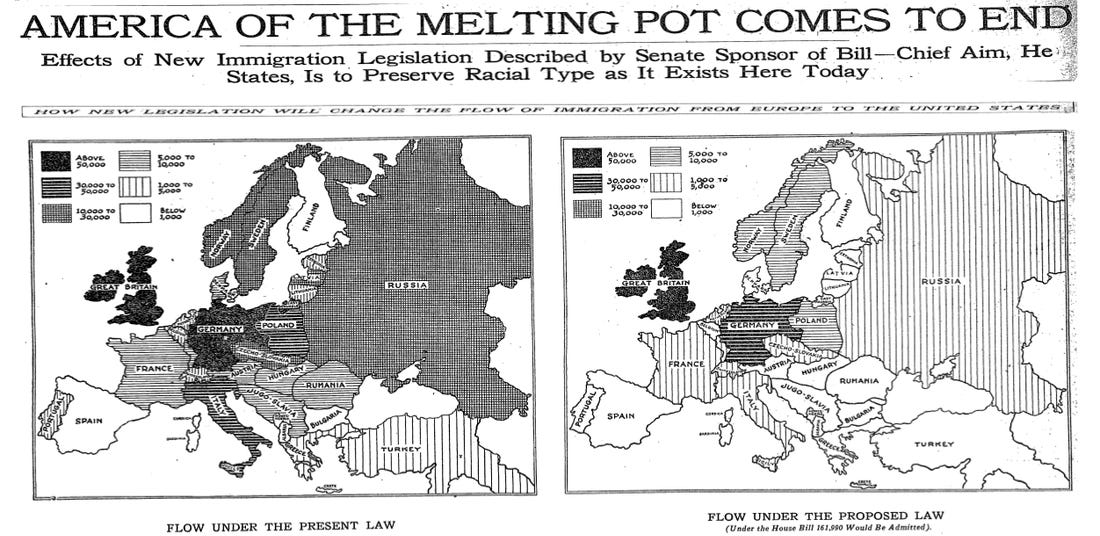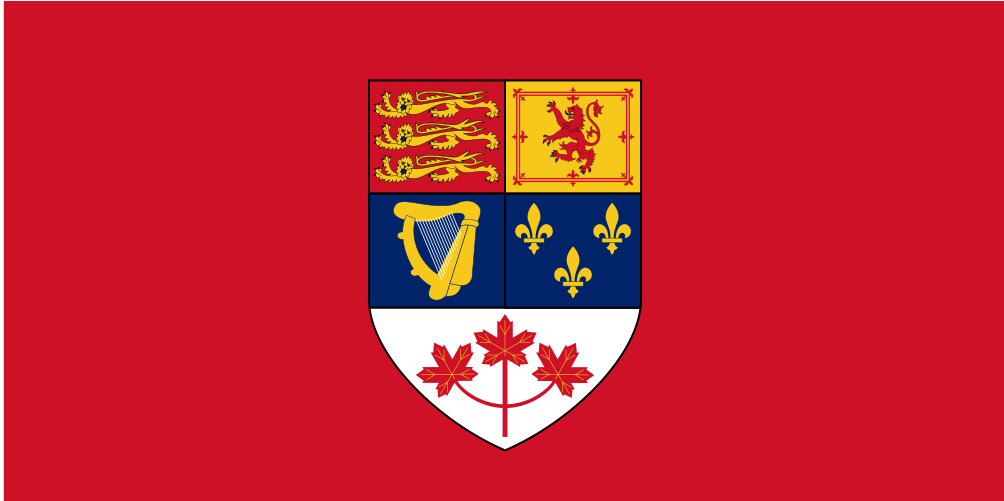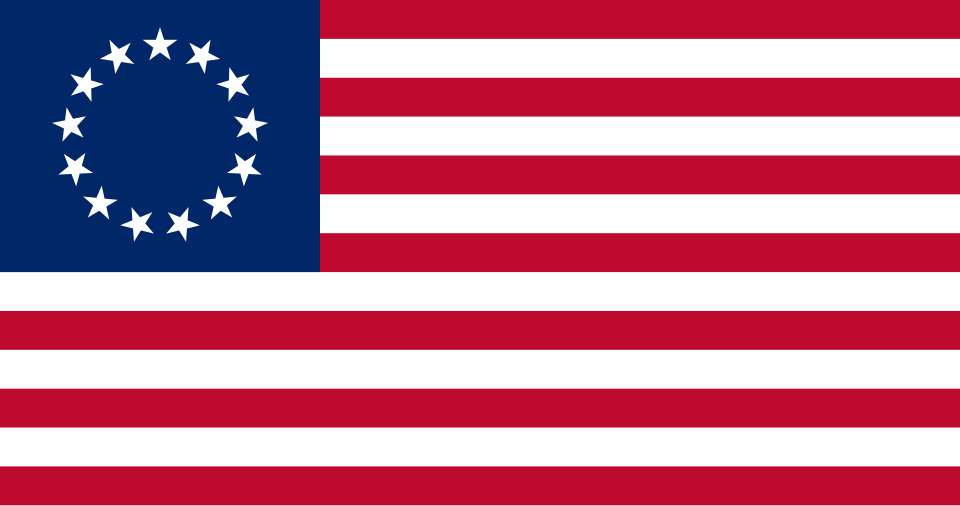
Some of my best insights come from the Fortissax is Typing group chat, where I regularly engage in conversation, exchange information, and sometimes debate with my many subscribers. Recently, I was researching historic American nationalist movements to support a point I was making in a discussion, and I came to some interesting insights. I had highlighted that all of the historic American nationalist movements which were tremendously successful, were organic and deeply rooted in what was then the historic population of what we may call "ethnic Americans”.
This differs from the widely used term "Heritage American," which is a soft, politically correct euphemism for "White American," typically referring to all White Americans prior to the civil rights cultural revolution and the 1965 Hart-Cellar Act.
For much of American history, ethnic Americans were primarily Anglo-American, with a secondary influence from the broader British diaspora. The term “native American” actually used to mean this, and not indigenous groups today. By "British" in this context, I mean specifically the peoples of the island of Great Britain: English, Welsh, and Scottish. Unlike in Canada, the Irish in the United States were not fully absorbed into the Anglo-American identity.
I suspect this is partly because the Irish settlers in Canada (or at least those who stayed) were Protestant Northern Irish or Loyalists who were pro-British. One of Canada’s Fathers of Confederation, Thomas D’Arcy McGee, was a fervent Irish nationalist in his youth, but upon maturing, he advocated for Canada to be a kingdom within the British Empire, rather than just a dominion, during the lead-up to Confederation. He was tragically assassinated by an republican Irish nationalist in Montreal.
The group chat was discussing the success and failure of different nationalist movements in the U.S.. I pointed out that the historic Second Klan movement, was not particularly fond of the Nazis or the German-American Bund, and vice versa, despite on the surface appearing to share views. It was, however, far more successful and influential in the United States as an ethnic nationalist, Protestant, Anglo-American movement. The Second Klan boasted nearly five million members nationwide, a significant force. It was distinct from the First Klan and differed greatly from the Third Klan in that it was extremely comparatively popular, well organized, and did not engage in criminal vigilantism. It expanded its focus from African Americans and Reconstruction in the South to include all foreigners, such as Catholic Irish, the Ashkenazi diaspora from Eastern Europe, unassimilated Germans, and Eastern and Southern Europeans more broadly.
The Second Klan's influence was strong enough to pressure President Calvin Coolidge to pass the 1924 Immigration Act, motivated by fears that they were being numerically replaced and displaced in some regions. This succeeded in preserving the Northwestern European majority of the United States, at the cost of accepting a large number of Germans. For instance, the American Midwest was once predominantly Anglo-American before it became German-American. The Second Klan also had the support of white-collar professionals, Protestant ministers, and Anglo-American elites through the early 1900s up to the 1920s.
By contrast, the German-American Bund mustered only about 30,000 members and was made up primarily of first- or second-generation German-Americans who still harbored national sympathies for Germany.
The Second Klan and the German-American Bund fundamentally clashed due to stark ideological and cultural differences. The Klan, deeply rooted in Anglo-American nativism, dating back to the Mayflower, sought to preserve a specifically Anglo-Saxon Protestant identity for America and viewed groups like German-Americans—particularly those who maintained strong ethnic ties—as unassimilated foreigners. The Klan feared that German-Americans, particularly those sympathetic to Nazi ideology, would pose a threat to American unity and loyalty, especially during the interwar period and World War II. The German-American Bund, on the other hand, was overtly pro-German and admired Nazi Germany, cultivating a Germanic, imperial identity that was foreign and un-American to the Klan. The Klan’s vision of America was steeped in American revolutionary ideals and Protestant values, while the Bund sought to foster ties with a European-centered, global agenda, creating a rift between the two groups. This cultural and ideological divide was further fueled by the Bund’s use of foreign symbols and the Klan’s desire to maintain a homogenous, Anglo-Protestant America free from external ethnic loyalties.

While they were open to non-Germans in their ranks, including Anglo-Americans, those Anglo-Americans were uninterested because they saw in the Germans an unassimilated foreign diaspora, even if they were racially similar, lobbying for their own ethnic interests on a national scale in an effort to increase political and cultural ties between the United States and Germany. Notwithstanding of course that this wouldn’t necessarily have been a bad thing, but you can see how this could be perceived as culturally insensitive and inappropriate, the same way Ukrainian diaspora do today.
Observing the history and trajectory of post-World War II White nationalist movements, I noticed two commonalities. The first is their connection to the mythology of the Second World War. As I have discussed in other works, the perception of the Third Reich among political dissidents is not only fictitious, but also selectively remembered.
There is a narrative inversion of the Post-War Consensus, also known as the "Boomer Truth Regime." This secularized, liberal Christian heresy serves as the creation myth of our age, shaping the worldview of Western liberal democracies worldwide. It casts Hitler as a secular Satan, Martin Luther King Jr. as Jesus, Whiteness as original sin, and racism as Satanism in practice.
The White nationalist, who often tends to be deeply tied to the ideals, philosophy, and iconography of the Third Reich, represents an inversion of this narrative. In their view, Germans are the "chosen people," embodied through Germanocentric racialist Nordicism and chauvinism. This is why discussions in White nationalist circles of ideal racial characteristics inevitably gravitate to preferences for fair and Nordic features, which are seen as metaphysically pure and physically desirable. The spectre of the Second World War persists, almost a century later, despite the claims of its adherents to be globally pro-White.
Adolf Hitler is seen as a secular redeemer, who died for the sins of Whites worldwide. Churchill becomes the secular Satan, and anti-Whiteness is viewed as a form of Satanism. Anti-White figures or regimes are seen as evil and deserving of destruction. This worldview can extend to the United States, which must repent for betraying the race and allowing foreign ethnic lobbies, particularly those formed by the Jewish diaspora, to infiltrate and exploit the nation for the benefit of international Jewry.
It’s not uncommon to see some White nationalists supporting the Russian Federation or the communist People's Republic of China in geopolitical moves that may, in fact, harm the interests of White Americans. Oddly, some support the Palestinian cause, believing in the possibility of a non-existent racial alliance between themselves and the Islamic world, a relationship that has never existed, as they were civilizational enemies until the Industrial Revolution tilted the balance of power in favour of the West.
This form of nationalism is, at its core, White imperialism or a form of homogenizing White globalism. It vaguely envisions an ideal global White imperium, where the ethnic and cultural distinctions of participating members take a backseat in a federal model that unites under the lowest common denominator of race. In other words, it’s not really nationalism, but imperialism—a combination of the belief that the Third Reich was a meritocratic pan-White empire, and the American project, which, for all intents and purposes, ended up a mostly pan-European assimilation project whose culture has been exported globally, whether intentionally or not.
In practice, this is a liberal, populist, and reductive view that unites all Whites under one banner, while overlooking the often complex and tumultuous differences between these ethnic, cultural, and regional groups. This perspective is compounded by the fact that most White Americans have adopted an overarching, invisible Anglo-based identity, though it is not quite fully Anglo in nature.
In the United States, there are not different White cultures, but rather different White American cultures, each retaining fragments of their progenitor diasporas. For all practical purposes, these cultures are distinctly American. This phenomenon is unique to the United States within the Western world and has its roots in classical liberalism. White nationalism could be called White civic nationalism, because of its inclusive and more shallow nature.
It is reductive because it emerged from that unique environment. One could argue that the Canadian Prairies, and to a lesser extent British Columbia (which is a unique blend of Eastern and Western Canadian cultures), lean in this direction as well, due to the higher concentration of historically non-Canadian, European immigrant communities in those regions—such as Germans, Dutch, Ukrainians, and Poles. While these groups have not numerically supplanted the Anglo-Canadian majority in the region, they make up a significant minority of White peoples in those provinces.
This regional phenomenon in Canada, though rare, has spawned in the form of American-style neo-Nazi groups, and later White nationalist groups, and combat sports clubs for young men, who provide discipline, training, purpose, and fraternity.
What seems to be an unfortunate, but not uncommon tendency among some White nationalists in Canada, is wearing Canadian nationalist symbology, such as the shield of the Canadian coat-of-arms, for a skinsuit at worst—a temporary measure to broaden their influence—with an insincere adoption of Canadian identity, and a hidden belief in the primacy and superiority of the overarching White race, the mythology of the Third Reich, or Germanic substrate, and or a shallow understanding of what the Canadian Shield means at best. It is not simply a symbol of White Canadians, it is a symbol of the four founding ethnic groups who converged and make up the White Canadian majority.
In the American context, Thomas Rousseau of the infamous Patriot Front split the remnants of the nascent Vanguard America, which was very much a poorly disguised national socialist group, to form his own organisation of those true believers in Americana, over concerns of the same nature. They were White nationalists, who identified more with the Third Reich, the Black Sun, or the Swastika, than with the deeply identitarian early American Republic, the minutemen of the revolution, and the Betsy Ross flag. The national socialists, of course, accused the latter of cowardice at worst, for not wanting to associate with the Third Reich, and insincere at best, choosing to believe this was a simple marketing tactic by Rousseau to fly under the radar from law enforcement. This remains the linchpin between these two types of nationalists.
As I’ve said before, it should be no surprise that the Canadian Shield resonates more with Canadian nationalists than the Sonnenrad. Canada was not a melting pot of European diasporas; it is an ethnically homogenous nation-state that was a century younger than the United States, bypassed the massive demographic-displacing hordes of European immigrants, and scarcely assimilated the disparate groups who did arrive. Ethnic tensions between Anglo- and French-Canadians softened with the 1763 conquest of Quebec out of necessity, and lasted for a moderately peaceful two centuries until flaring up around the time of the World Wars, with the conscription crises, and the post-World War II era, when communists and Marxist-Leninists exploited the legitimate grievances of many French Canadians as well as the relative failures of Maurice Duplessis's Union Nationale provincial government.

Historically, the German diaspora, for example, was not necessarily friendly to the British-French majority and identity of Canada. Prime Minister John Diefenbaker, a Saskatchewan German, the last openly nominal Canadian nationalist leader, was a pioneer in immigration reform, ending the identitarian preference for a British-French majority of Canada, which still persists to this day. His reforms would be followed by Lester B. Pearson, Pierre Trudeau, and the European immigrants from the Trudeau Sr. years were used as the Trojan Horse to fuel the “post-national state on stolen land” mythology that became the Canadian civil religion. There was never such a thing as White unity in Canada, at the very least beyond the Anglo-French alliance.
The noble Hessian German mercenaries and Pennsylvania “Dutch” (a misnomer of the German word Deutsch), who fought for the Loyalists in the American Revolution and settled towns like Berlin (now Kitchener, Ontario), and Lunenburg, New Brunswick, assimilated into the Anglo-Canadian identity and forgot their German backgrounds. Much can be said for most of the Dutch in Eastern Canada, minus those who maintain their unassimilated communities to this day in Ontario, continue to speak Dutch, and don’t really interact with Canadians.
The more recent German immigrants to Saskatchewan and Alberta, on the other hand, throughout the late 1880s to 1900s—well, it’s debatable if they ever truly assimilated, given what seems to be their historic occasional hostility to Canadian traditions, such as monarchism, cultural and political concepts like communitarianism, corporatism, and organicism.
Historian Donald Creighton had this to say about the Germans in British Columbia, who, during the negotiation to join the Canadian Confederation, preferred the colony join the United States.
The financial weakness and the isolation of the Colony [of BC] continued; and apart from Confederation there did not seem to be any promising avenue of escape. A petition prepared towards the close of 1869, which requested the annexation of the province [of BC] to the United States, was signed by only one hundred and four people, among whom were a curiously large number of Jews and Germans; and for the great mass of the roughly ten thousand inhabitants of the province, even including its most stubborn anti-confederationists, union with the American Republic never seemed in the least a desirable solution.
- Donald Creighton, Canadian historian writing in “Dominion of the North,” 1944.
White nationalists, with a preferential view of the lowest common denominator of the White race as an identity, with no evident preference for any ethnic group—though often covertly for Germanics—seem to prefer a nondescript global White identity, that is anchored to the primacy of the German peoples, or Germanics broadly.
The Others
For others, there is a desire for the perpetual survival of the nation, rooted in distinct ethnic and cultural identities tied to specific regions. The underlying commonality is that everyone is White, but of course, these ethnicities can only truly be unique if they are (you can’t be Japanese unless you’re East-Asian),.
There is a deeper identification with local culture and national history, which is more concrete and less abstract—more tribal. After years of identity erasure by the managerial regimes of the West, many are rediscovering their local, ethnic, and national roots. Others are affirming their uniquely strong, distinct identities they’ve held deeply all along, and I count myself in this cohort.
This nationalist’s identity is not anchored in the inverted Boomer Truth Regime. They do not follow a heresy of a heresy; Hitler and the Nazis are interesting, but not important to the future. While some unique policy innovations are admired for their effectiveness in things like moral culture, military rearmament, or natalism, Hitler is a footnote in history, left in the past like other significant figures, such as Julius Caesar or Napoleon Bonaparte. Their distinct cultures, formulated by centuries or millennia of shared ethnic origins, experiences, and values, are at the centre of their strong identities.
This nationalist doesn’t view the Second World War as a metaphysical battle for good and evil, but as another conflict marked by geopolitics and empire first, and ideology second—while not diminishing the importance or impact of those ideological clashes. Many mistake this nationalist as simply being afraid of social ostracism for associating with the legacy, symbols, or ideology of Adolf Hitler and the German National Socialist Workers Party, but the truth is, whether you’re the first type of nationalist or not, you’ve been referred to as a Nazi by the horde of centre-left normies your entire life. You’ve lost job opportunities, been fired, been doxxed, and potentially even destroyed relationships for thinking the way you do—that your own people deserve to exist, and that it’s not only morally acceptable to put yourself and your in-group’s interests first, but that it’s immoral not to.
Fear was never the issue; it’s a matter of identification. I can only speak for myself, but I suspect many would empathize with me when I say, for example, that I just don’t identify with Hitler, the NSDAP, or the Nazis. I’m Canadian—an ethnic Canadian, a descendant of the Filles du Roi and the Loyalists. My family is eight or twelve generations back at the earliest in either side—the first Anglo-French Canadian founders—and I make up the ethnic majority of the Canadian nation. I’m not German, or phenotypically Nordic, but North Atlantid. My politics don’t fully align with the NSDAP, and I’m inspired by my nation’s own heroes, struggles, and experiences—shaped by brutal survival and the challenge of building civilization in the frozen spruce bog and rock of Canada, and the fires of the American and French Revolutions.
We are inspired by Samuel de Champlain, his slaying of two Iroquois chiefs with a single shot of his arquebus after ambushing an Iroquois warband patrol, and personally leading the charge on the shores of Lake Champlain. Inspired by the rebel Anglo-Québécois, Wolfred Nelson, who personally led 5,000 Parti Patriote rebels into conflict with the colonial government to end the oligarchy of the Château Clique. Inspired inspired by Sir John A. Macdonald and his vision for a Canada united coast to coast. Inspired by the counter-revolutionary Anglican Tories of Ontario, among the first to fight for a Christian Monarchist society with a national value of Order, not the liberal and American notion of liberty.
I see in the flag of the city of Montreal, the Canadian Red Ensign, and the shield of the Canadian Coat-of-Arms, the sacred symbol of our people—the Canadian people. Not a foreign 20th-century strongman. This nationalism seems to be unique to Eastern Canadians, especially French Canadians (where most of them live, and have lived for 400 years), the Maritimes, and Southern/Eastern Ontario. It is not fully inclusive, is not afraid of drawing lines in the sand of who’s in and who’s out, and has more in common with European nationalist movements of the 20th century and post-World War II era.
There’s no question that White peoples worldwide are under extreme demographic and cultural threat. The global population of Whites is estimated to drop even further than the current 6%, and this is not good for the majority of Western nations. We are already witnessing the unraveling, and diversity is destroying Western democracies into petty, hostile tribal groups competing for socioeconomic opportunities in shared spaces and control of the state apparatuses.
Nor should there be no cooperation between Western nations, or that one White person from one country should not be allowed a shot at assimilating to another’s cultures. Certainly, the vast majority of foreigners to the West make no distinction between Western nations, but among our own, there’s an understandable desire to not simply be reduced and melted down into generically “White” slop after decades of our distinct identities being erased to pave the way for the multicultural meat grinder.
White nationalism, in its distinctly American, liberal, egalitarian, and populist way, will never jive with the more conservative, ethnic, and exclusive identities of Europe, Quebec, and Eastern Canada at large, nor should it, but this does not mean there can’t or won’t be inevitable cooperation. We simply want our distinct identity respected.






A lot of the NSDAP larping is totally deracinated white men who want associate with the most aggressive form of ethnic solidarity to compensate for a heritage they were never taught. It's frustrating, but we can teach them.
Just applied to join Forti-Chat. @BrockAppreciator